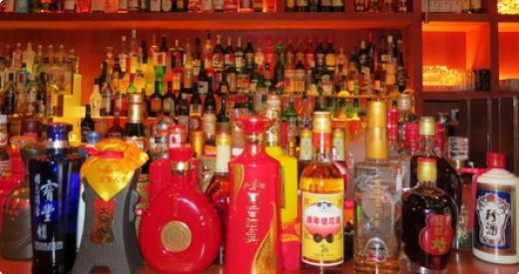
While wine gets all the media attention, being the drink a la mode, a much larger percentage of the Chinese population are drinking baijiu and are much more familiar with the flavour of this potent spirit. The same curiosity that propelled me to take the Certified Sake Sommelier exam in Tokyo in 2011 drove me to Shanghai on a rainy June morning to partake in one of largest tastings of baijiu organised by Derek Sandhaus in preparation for his upcoming book that will include a comprehensive review of baijius made in China.
It was an educational day. I methodically tasted through over 80 baijius taking notes in the same way I do for wine. What surprised me about the baijius were how similar the flavours are to Chinese ingredients.
It took about five hours to taste the baijius, with a handful of huangjius (lower alcohol rice based wine) thrown in. All the rice based wines, the huangjius or mijius as they are also called, were grouped in one table. These wines are fermented but not distilled so the alcohol is about 20% rather than 50%+ for baijius. The baijius were categorised by their flavour types and were grouped into the following categories:
1) Light aroma baijius – these are often found in northeast and north central China such as in Shanxi and Beijing. The base ingredient is sorghum and sometimes a bit of rice may be added. The grains are fermented in ceramic or stone pots and aged in underground pits.
2) Strong aroma baijius – this category is very large and there are normally five grains used for making strong aroma baijiu: sorghum, rice, corn, glutinous rice, wheat or buckwheat. Strong aroma baijiu comes from Anhui and Sichuan – 70% is from Sichuan. 30% all baijiu is from Sichuan province. The strong aroma comes from the ‘la jiao’ – old black mud pits that have absorbed the bacteria in the air and area. Pits must be at least three years old so they have a chance to gather enough bacteria. Old pits are approximately 30 years old.
3) Sauce aroma baijius – this category is dominated by the well-known Moutai brand, a spirit that is distilled about 8 times. Most sauce aroma baijiu comes from southeast Sichuan and northwest Guizhou. Here stone pits are used and the pits do not gather bacteria as with strong aroma baijiu. The main ingredient is sorghum although other grains can also be used. Moutai steam distills up to eight or nine times. The cooled distillants in batches are collected and aged separately. Normally, the first few batches are thrown out and the last few are lower quality so the middle batches are mainly used. It is then aged in large clay jars for 3 years and may be blended with other batches prior to bottling.
4) Rice based baijius – (not to be confused with huangjiu which is not distilled) this is rice wine fermented in ceramic or stone pot stills. These are most often found in southeastern provinces such as Guangdong and Guangxi. Either normal rice or glutinous rice may be used. Rice based baijius are often smoother and lighter than other grain based baijius and I found that starting to taste with this group first was the best way to ease into stronger flavours. Rice based baijius are aged in limestone caves in southeastern China and the minerals are supposed to contribute to favourable flavour development and evolution.
5) Mixed aroma baijius – a mixed bag of baijius that ranges from sesame to pork fat flavours. I tasted this category at the very end.
Baijiu production can vary greatly depending on style and region. However, it is useful to keep in mind these basic production steps:
1. Wash grains then steam the grains in a giant metal steamer.
2. Cool down grain with fans but not enough to kill yeast; then add fermentation agent, jiu qu.
3. Ferment the grains – the methods are different depending on style and factory.
4. Distillation of the fermented grains – the method and process varies widely.
5. Aging is usually 6 months for the basic, mass market level; 3-10 years is the average.
6. Blending/bottling is very important since every batch of grains are fermented separately and aged separately. Master blender tastes the different lots and then forms different recipes. The ones deemed the highest quality becomes the premium or super premium baijius.
By Jeannie Cho Lee on July 10, 2013









